Client: Show Technologies
Work Done: Fibreglass Roof Sheet Replacement
contact us today or call direct 1300-564-612
Pan Civil | Chillex | Hanlon | South Pacific Laundry | Show Tech | Royal Sydney Gold Club | Warehouse Re-Roofing | Strathfield Golf Club
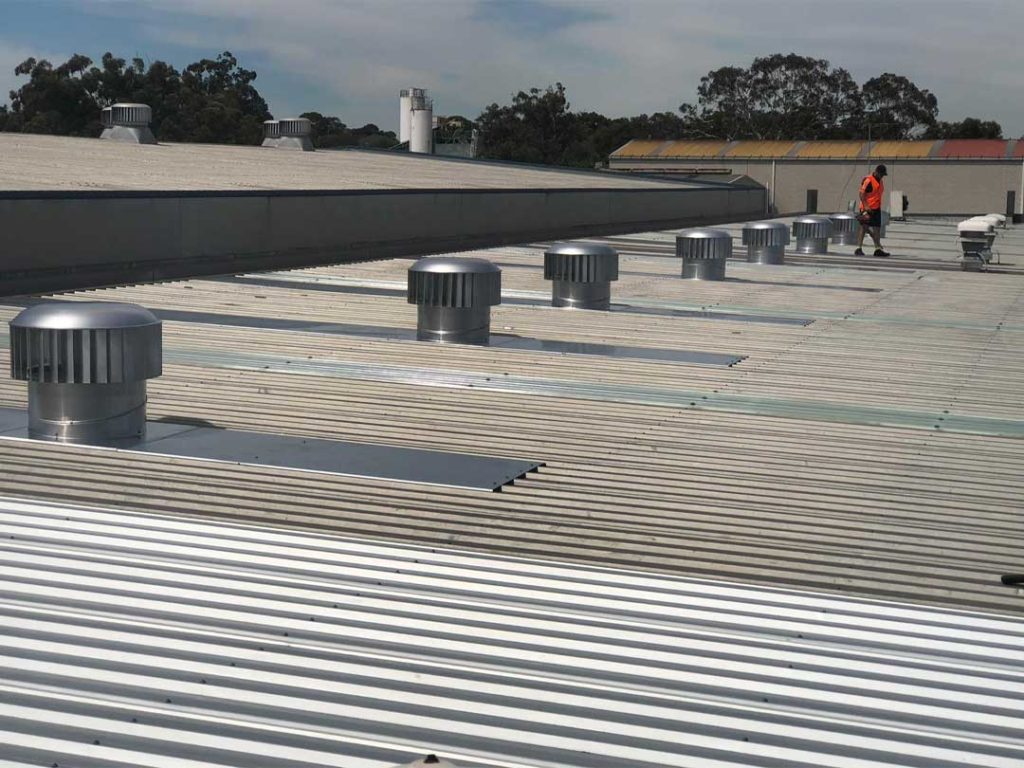
Vent Installation – In Progress
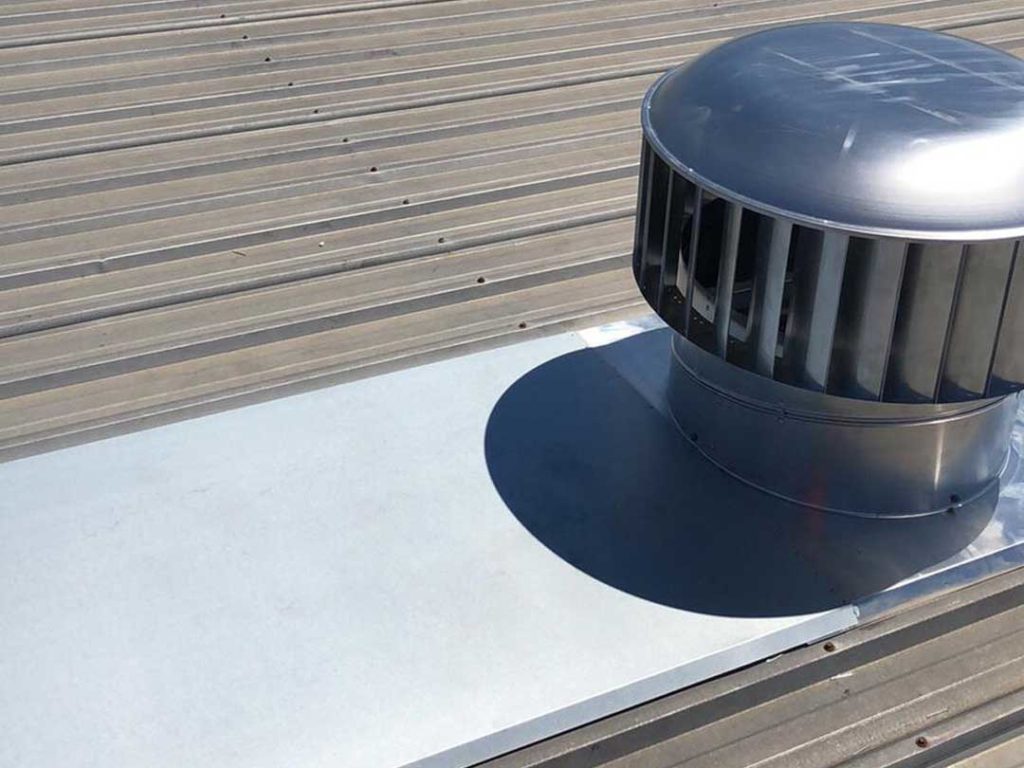
New Vent & Back Tray
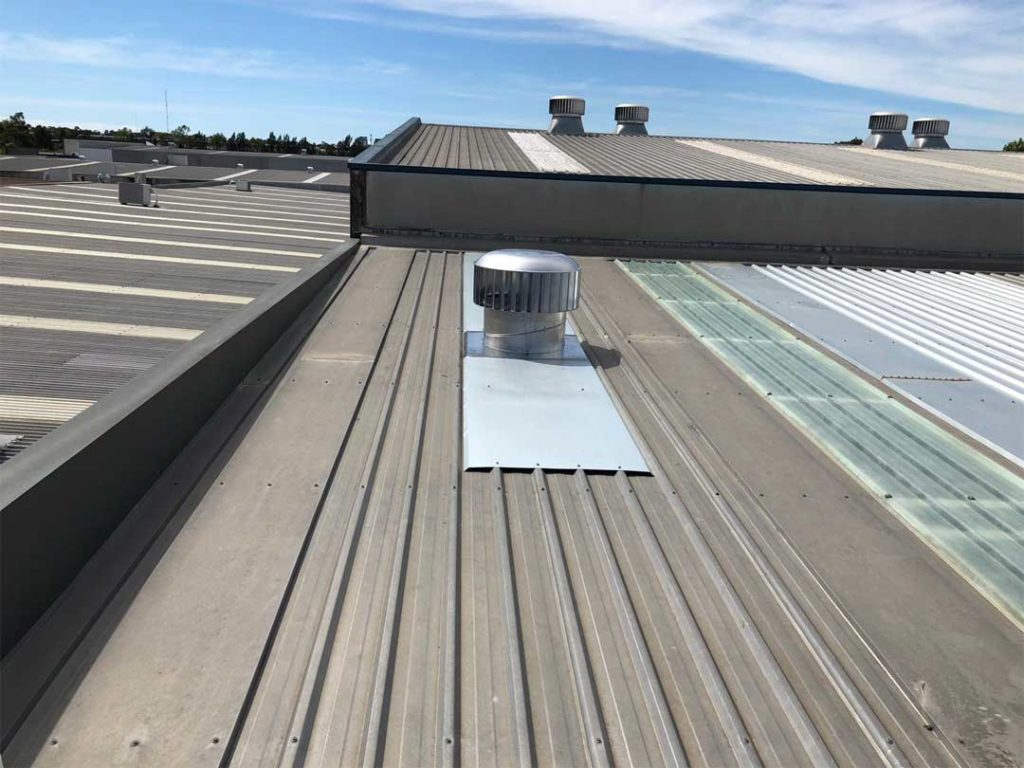
New Vents & Back Trays
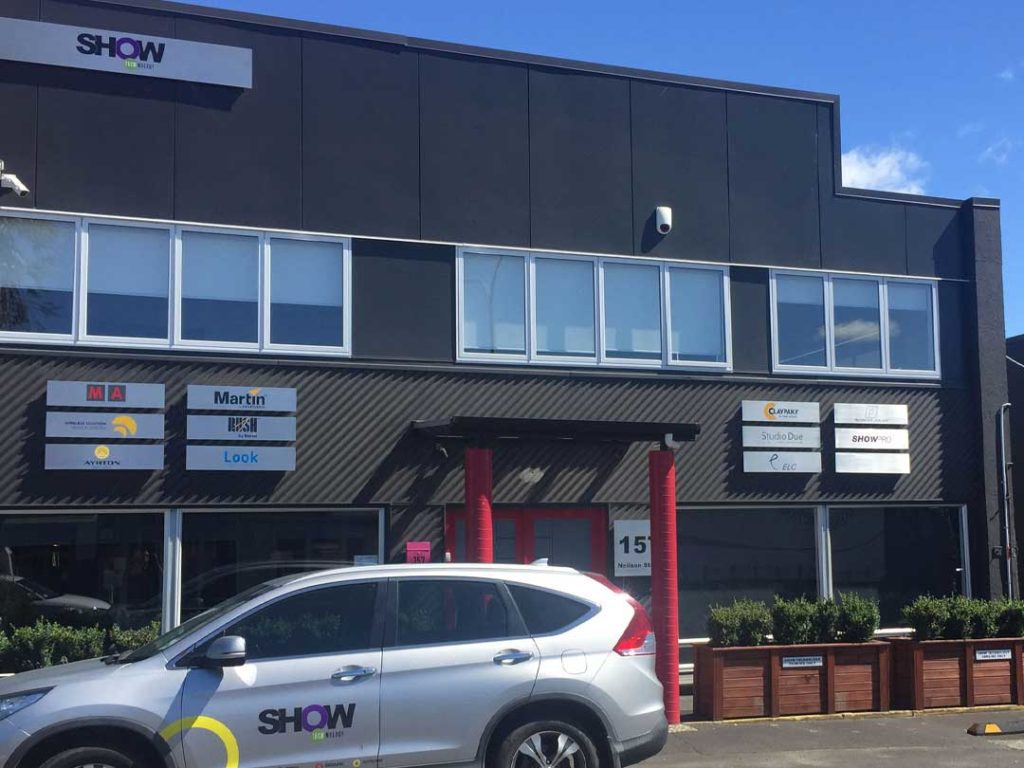
Show Technologies
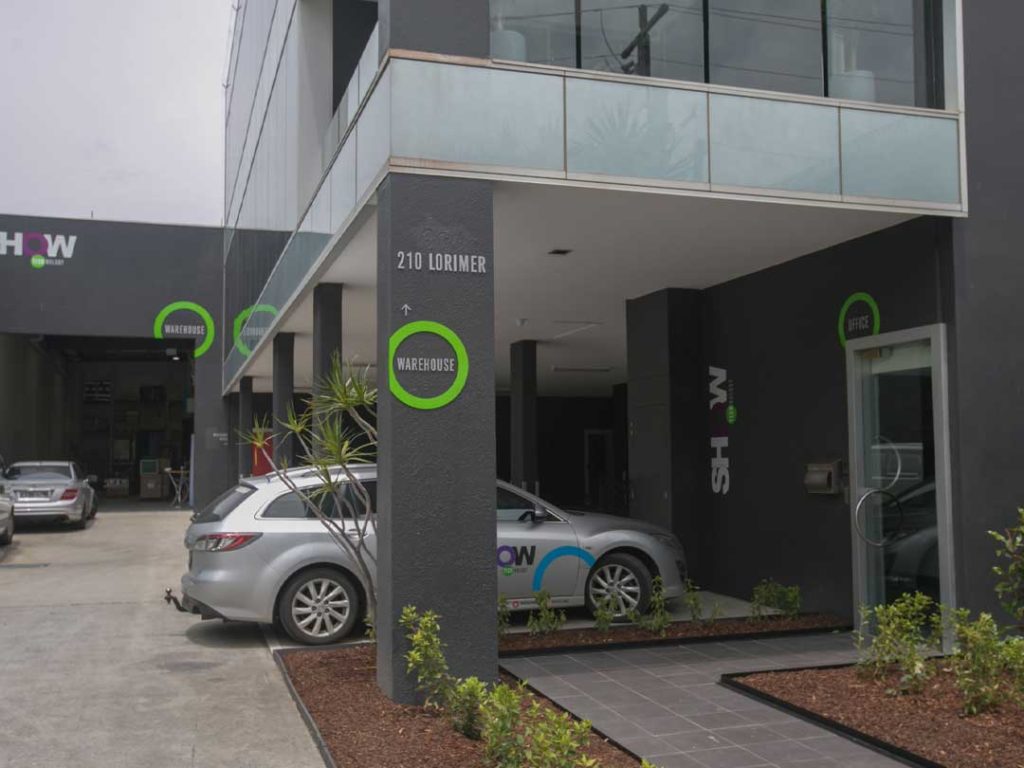
Show Technologies
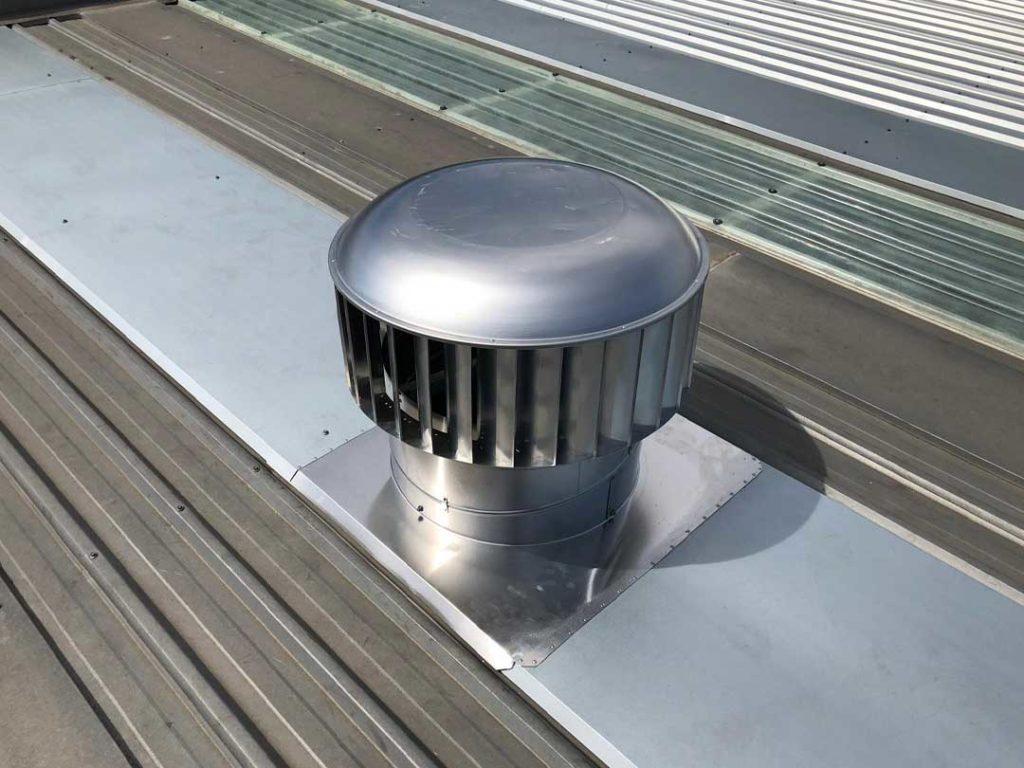
Vent & Back Tray
contact us today or call direct 1300-564-612
Pan Civil | Chillex | Hanlon | South Pacific Laundry | Show Tech | Royal Sydney Gold Club | Warehouse Re-Roofing | Strathfield Golf Club
Show Technologies – Commercial Turbine Installation Sydney
Show Technology Industries is situated in Silverwater a suburb in Western Sydney.
At Roof Vents Australia we received a Quote request to come and evaluate the best way to help ventilate the factory owned by Show Technology. Our representative attended the meeting at Silverwater at the appointed time. The company was looking for a way to help exchange the air in their factory to facilitate a cleaner and cooler environment for both their workers and their products.
RVA suggested the use of 9 x 600mm Ampelite industrial ventilators. These were suggested as the solution for several reasons. Ampelite produce a reliable and ascetically pleasing product. Their ventilators have a good air exchange capability. Once fitted they are run by wind power with little to no ongoing costs.
Ampelite ventilators are silent when running. They carry a 15 year warranty. RVA Roofing Solutions also quoted to supply and install back-tays to complete the installation process. Upon acceptance of the Quote , an installation date and time were finalised.
As with keeping with RVA’s fast installation promise, the Ampelite Industrial vents were ordered immediately so that the installation could be completed at the earliest available date. Supply of the Industrial vents from Ampelite took 6 working days. On installation day Roof Vent Australia’s installers arrived on the work site early in the morning. It took 1 day to complete the installation. The job was finished with no disturbance to the work force or the operation of the business.
At the end of the installation process all rubbish was removed from the site and recycled as is RVA’s waste management policy. Show Technology Industries’ now have a cooler work environment for their workers as well as a more regulated temperature for their warehouse. As with all our work, RVA Solutions took photos of the finished project both close up and an overall view to supply to the customer. Roof Vents Australia takes pride in their work wether the finished project can be easily seen by the customer or the work area is not readily accessible. We can see it, therefore it is always done to the highest standard.
contact us today or call direct 1300-564-612
Pan Civil | Chillex | Hanlon | South Pacific Laundry | Show Tech | Royal Sydney Gold Club | Warehouse Re-Roofing | Strathfield Golf Club
Exploring Roof Turbine Ventilation in Australia: Cost, Efficiency, and Effectiveness
Roof ventilation is a critical aspect of maintaining a comfortable and healthy environment within your home, particularly in a country like Australia where temperatures can soar. Among the various options available, roof turbine vents, commonly known as whirlybirds, have gained popularity for their effectiveness in ventilating attics and reducing heat buildup. In this article, we delve into the nuances of roof turbine ventilation, addressing common questions and concerns.
1. How much does it cost to install a roof turbine vent?
The cost of installing a roof turbine vent can vary depending on factors such as the size of your roof, the type of turbine vent chosen, and labor costs. On average, homeowners in Australia can expect to pay anywhere from $200 to $500 for installation.
2. How much does it cost to get a roof turbine?
The cost of purchasing a roof turbine, or whirlybird, typically ranges from $50 to $150 per unit. Higher-quality or specialized models may command a higher price.
3. Are turbine roof vents any good?
Turbine roof vents can be highly effective in ventilating attics and reducing heat buildup, thereby enhancing overall indoor comfort and potentially lowering energy costs. However, their effectiveness may vary depending on factors such as roof design, prevailing wind patterns, and attic size.
4. Why does my turbine roof vent leak during heavy rain?
Turbine roof vents are designed to withstand normal weather conditions, including rain. However, leaks may occur if the vent is damaged or improperly installed. Inspecting the vent for damage and ensuring proper installation can help mitigate leaks.
5. What are the cons of turbine vents?
While turbine vents offer effective ventilation, they may have some drawbacks. These can include noise generation during windy conditions, maintenance requirements to ensure optimal performance, and the potential for leaks if not properly installed.
6. Does rain get through roof turbines?
Under normal conditions, rain should not penetrate properly installed and functioning turbine roof vents. However, leaks may occur if the vent is damaged or improperly maintained.
7. Can rain come through Whirlybird?
In most cases, rain should not penetrate a properly installed and functioning whirlybird. However, leaks may occur if the whirlybird is damaged or incorrectly installed.
8. What is better than a whirlybird?
Alternative roof ventilation options include ridge vents, static vents, and powered attic fans. The best option for your home depends on factors such as roof design, climate, and budget.
9. What is the most efficient roof vent?
The most efficient roof vent depends on various factors, including roof design, climate, and ventilation requirements. Ridge vents are often considered efficient, as they run along the peak of the roof, allowing hot air to escape evenly.
10. What is the best roof turbine?
Several reputable manufacturers produce quality roof turbines, including Lomanco, Air Vent, and Edmonds. The best choice for your home depends on factors such as roof size, prevailing winds, and budget.
11. How many turbines does a roof need?
The number of turbines needed depends on factors such as attic size, roof pitch, and ventilation requirements. A general guideline is to install one turbine vent for every 150 to 300 square feet of attic space.
12. Where should a turbine roof vent be installed?
Turbine roof vents should ideally be installed near the peak of the roof to maximize airflow. Additionally, they should be placed evenly across the roof to ensure balanced ventilation.
13. How do turbine roof vents keep water out?
Turbine roof vents are designed with features such as flashing and sealed bearings to prevent water intrusion. Proper installation and maintenance are crucial to ensuring the vent remains watertight.
14. Do turbine vents work without wind?
Turbine vents rely on wind to create airflow and ventilate the attic. While they may not operate as efficiently in the absence of wind, they can still provide some ventilation through convection currents.
15. Do turbine vents need to be level?
Turbine vents should be installed as level as possible to ensure proper operation and longevity. A level installation helps prevent issues such as binding and uneven wear on bearings.
16. Why is my roof turbine making noise?
Turbine vents may generate noise during windy conditions due to the spinning motion of the turbine blades. Ensuring proper installation and maintenance can help minimize noise levels.
17. Are whirlybirds better than vents?
Both turbine vents (whirlybirds) and static vents offer effective roof ventilation, but the best choice depends on factors such as roof design, climate, and personal preference.
18. Why is my turbine roof vent not spinning?
Several factors could cause a turbine roof vent to stop spinning, including debris obstruction, mechanical issues, or improper installation. Inspecting the vent and addressing any issues promptly can help restore functionality.
19. How well do roof turbines work?
Roof turbines can work effectively to ventilate attics and reduce heat buildup, thereby improving indoor comfort and potentially lowering energy costs. However, their performance may vary depending on factors such as wind patterns and attic size.
20. What is the cost of a 15kW turbine?
The cost of a 15kW turbine can vary depending on factors such as brand, model, and installation requirements. On average, homeowners can expect to pay anywhere from $20,000 to $50,000 for a residential-scale turbine of this size.
Conclusion
Roof turbine ventilation offers an effective solution for ventilating attics and reducing heat buildup in Australian homes. While turbine vents, or whirlybirds, can provide numerous benefits, including improved indoor comfort and energy savings, it’s essential to consider factors such as installation, maintenance, and compatibility with your roof design. By understanding the nuances of roof turbine ventilation, homeowners can make informed decisions to enhance their home’s efficiency and comfort.
